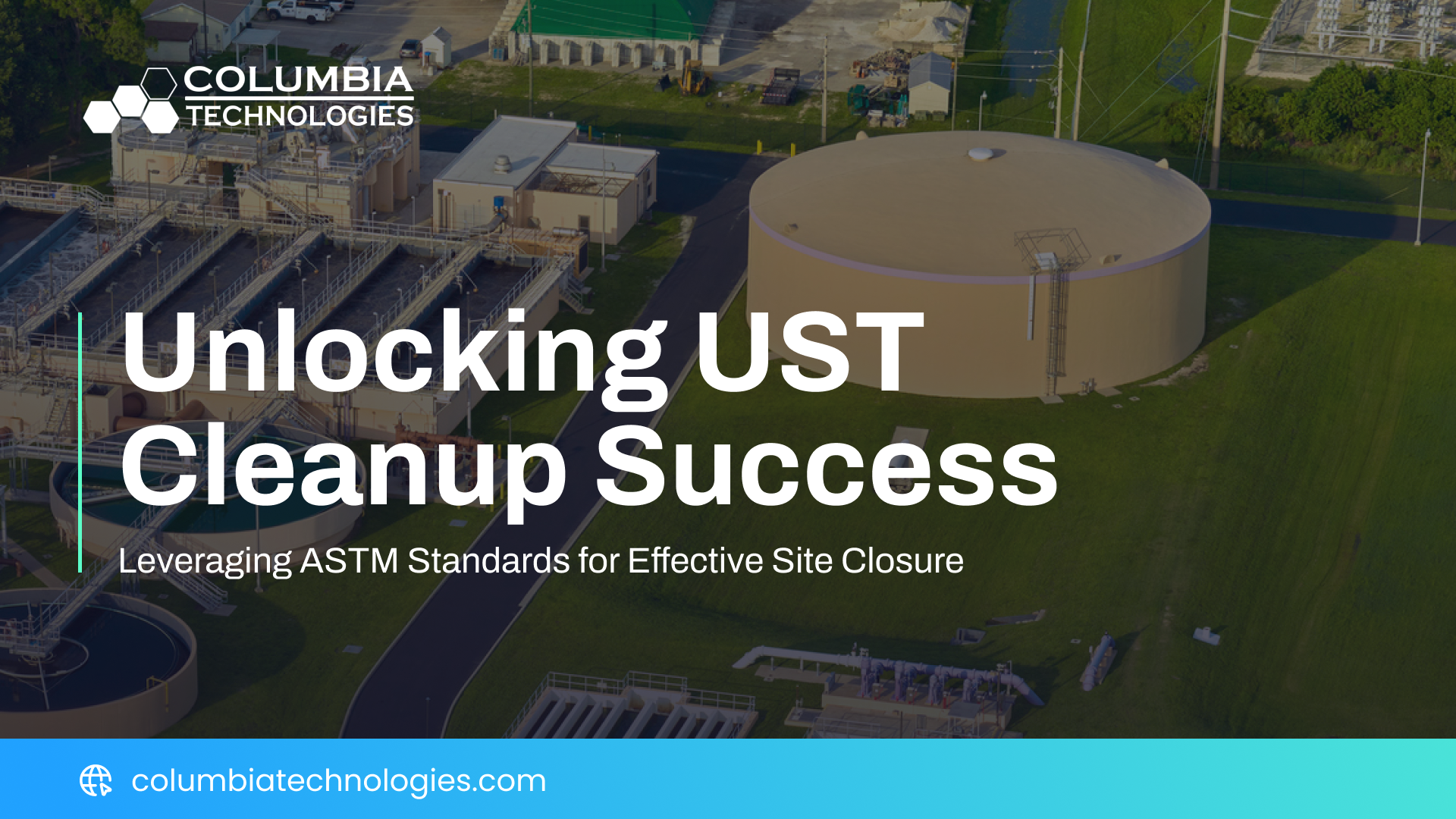Effective site closure for Underground Storage Tanks (USTs) is paramount in safeguarding environmental protection and public health. USTs, if improperly managed during or after their lifespan, pose significant risks of contamination to soil and groundwater.
Implementing standardized practices in environmental cleanup ensures consistency, reliability, and effectiveness in mitigating these risks. This guide delves into ASTM's "Moving Sites to Closure" (MStC) standards and explores their application to achieve seamless and efficient site closures.
Overview of ASTM's "Moving Sites to Closure" Guidelines
Introduction to the MStC Initiative
The "Moving Sites to Closure" (MStC) initiative by ASTM is a comprehensive framework designed to streamline the process of UST site closures. Its primary objectives include enhancing site assessment accuracy, optimizing remediation efforts, and ensuring regulatory compliance. The MStC guidelines are developed in collaboration with the Environmental Protection Agency (EPA) and various state agencies, reinforcing the importance of a unified approach to environmental cleanup.
Collaboration and Achievements
Collaborative efforts among ASTM, EPA, and state agencies have significantly advanced UST cleanup operations. To date, thousands of UST sites have been successfully remediated, showcasing the effectiveness of these joint initiatives. However, challenges remain, particularly in dealing with complex contamination scenarios and ensuring long-term monitoring and maintenance.
Insights from the ASTM Webinar
Key Takeaways
A recent webinar hosted by industry experts Greg Dunn (IL EPA), Tom Fox (CO DOPS), and Tom Schruben (US EPA OUST) offered valuable insights into the implementation of the MStC standards. Key takeaways included lessons learned from past cleanup operations, emphasizing the importance of thorough site assessments and adaptive remediation strategies.
Discussions and Draft MStC Standard
The webinar also discussed the draft MStC standard, highlighting its potential to address current challenges in UST site closures. The draft standard incorporates feedback from various stakeholders, ensuring that it reflects the latest advancements in technology and best practices. Participants stressed the need for continuous improvement and collaboration to achieve the shared goal of effective site closure.
Watch the Full ASTM Webinar
For a deeper understanding of the MStC standards and their application, we encourage you to watch the full ASTM webinar. It provides detailed insights from industry experts and practical guidance on implementing the standards.
Key Considerations and Best Practices
To ensure the success of UST site closures, it’s crucial to focus on foundational elements that drive the process. These considerations are pivotal for optimizing closure strategies, achieving regulatory compliance, and ensuring environmental safety.
Risk-Based Corrective Action (RBCA)
Risk-Based Corrective Action (RBCA) is a cornerstone of the MStC guidelines, providing a structured approach to managing contaminated sites. RBCA involves evaluating the risk posed by contaminants to human health and the environment and tailoring remediation efforts accordingly. This approach ensures that resources are allocated efficiently, focusing on areas with the highest risk.
High-Resolution Site Characterization (HRSC)
High-Resolution Site Characterization (HRSC) is instrumental in identifying the precise distribution of contaminants within a site. By employing sophisticated techniques such as direct sensing and real-time data acquisition, HRSC enables a more detailed understanding of subsurface conditions. This enhanced clarity is crucial for designing effective remediation strategies and minimizing uncertainty.
Innovative Remediation Techniques
In-situ bioremediation and natural attenuation are among the innovative techniques highlighted in the MStC guidelines. In-situ bioremediation leverages microbial activity to degrade contaminants on-site, offering a sustainable and cost-effective solution. Natural attenuation, on the other hand, relies on natural processes to reduce contaminant concentrations over time. Both methods exemplify the commitment to environmentally responsible remediation practices.
Alternative Closure Criteria
ASTM standards also provide alternative closure criteria, allowing for flexibility in achieving site closure. These criteria consider site-specific conditions and the effectiveness of ongoing remediation efforts. By adopting alternative closure criteria, stakeholders can expedite the closure process while ensuring that environmental and public health standards are met.
Leveraging Technology for Effective UST Management
Introduction to Columbia Technologies
Columbia Technologies is at the forefront of employing advanced technologies for UST management. Their innovative methodologies and state-of-the-art equipment enable precise site assessments and efficient remediation efforts. By leveraging cutting-edge technology, Columbia Technologies ensures that UST cleanups are both effective and sustainable.
Technologies and Methodologies
Columbia Technologies utilizes a range of technologies, including 3D visualization, real-time data analytics, and remote sensing, to enhance the accuracy and efficiency of UST management. These methodologies provide a comprehensive understanding of site conditions, facilitating targeted remediation efforts and reducing project timelines.
Case Study
In Auburn, Alabama, a complex underground storage tank (UST) site faced persistent contamination despite extensive efforts and a $340,000 investment over 15 years.
The breakthrough came when COLUMBIA Technologies conducted a high-resolution site characterization in 2014 using advanced technologies like LIF-UVOST® and HPT, revealing much greater and more complex contamination than previously understood. This new insight enabled the development of a targeted remedial strategy involving the injection of chemical oxidants and surfactants, significantly refining the approach to remediation and setting a new standard for handling such environmental challenges.
Learn More About Columbia Technologies
For an in-depth understanding of Columbia Technologies' capabilities in managing underground storage tank (UST) cleanup projects, visit our website. Explore comprehensive details on their advanced technologies and methodologies that can significantly enhance the success rate of your site closure initiatives.
Conclusion
Adopting ASTM standards is essential for achieving efficient and effective UST site closures. These standards provide a comprehensive approach that enhances site assessment, optimizes remediation efforts, and ensures regulatory compliance.
The MStC guidelines offer a structured framework, which is crucial for both environmental protection and industry best practices. Keep an eye out for the upcoming full guidelines by ASTM, which hold the potential to further improve UST management practices and drive progress toward a cleaner and safer environment.
What are your thoughts on the importance of these standards in our industry? Share your insights and let's discuss!


